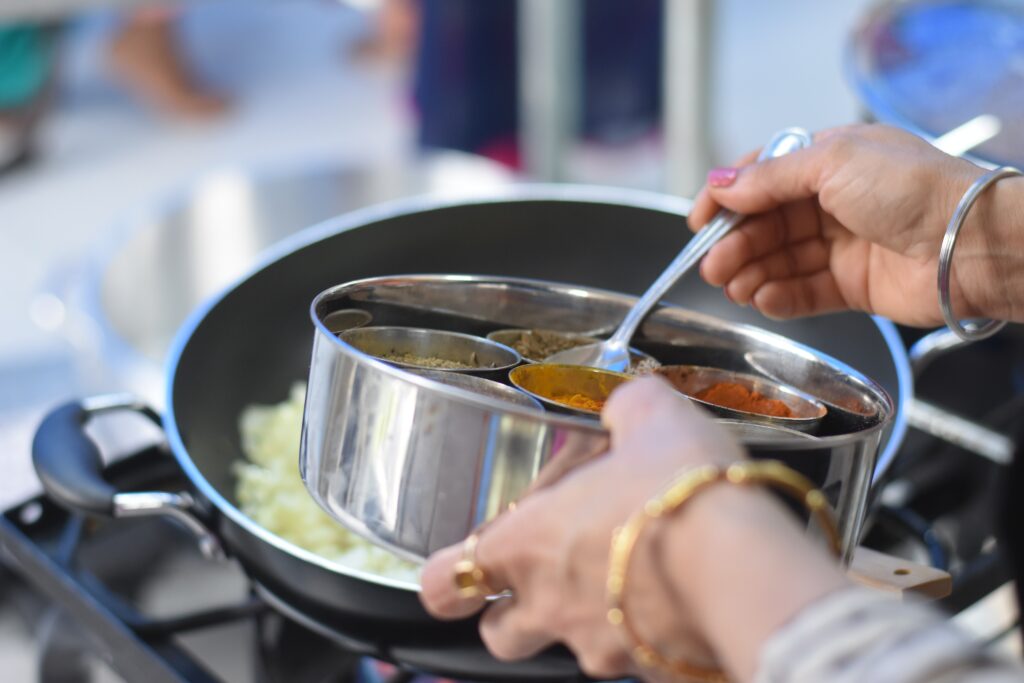Designing an Indian kitchen can be a challenging task as it has to accommodate various cooking styles, ingredients, and utensils that are unique to Indian cooking. Here are some important considerations to keep in mind when designing an Indian kitchen:
Layout: The layout of an Indian kitchen should be designed to provide ample workspace for cooking and food preparation. A U-shaped or L-shaped layout is ideal for an Indian kitchen as it allows for efficient movement between the different work zones.
Storage: Indian cooking involves the use of a large number of spices, lentils, and other ingredients. Therefore, the kitchen should have sufficient storage space to accommodate these items. Cabinets with multiple shelves, pull-out drawers, and built-in organizers can help keep the kitchen organized and functional.

Ventilation: Indian cooking often involves frying, grilling, and using strong spices, which can lead to smoke and strong smells. A good ventilation system with a range hood or exhaust fan is essential to keep the kitchen smelling fresh and prevent the buildup of grease and oil.

Lighting: Adequate lighting is essential in an Indian kitchen as it helps in food preparation and cooking. The kitchen should have a combination of ambient, task, and accent lighting to create a comfortable and functional work environment.

Countertops: Indian cooking often involves the use of heavy and large utensils, such as pressure cookers, woks, and tawas. Therefore, the kitchen should have sturdy and durable countertops, such as granite or quartz, that can withstand the weight and heat of these utensils.

Flooring: The kitchen floor should be easy to clean and durable. Materials like ceramic or porcelain tiles, which are water-resistant and can withstand spills, are a good choice for an Indian kitchen.
Electrical and Plumbing: The kitchen must have adequate electrical and plumbing provisions to accommodate the various kitchen appliances, such as ovens, refrigerators, and mixers, that are commonly used in Indian cooking.
Safety: The kitchen should be designed with safety in mind. The cooking area should have fire extinguishers, and the electrical and gas connections should be installed by qualified professionals to ensure safety.
By considering these important factors, designers can create a functional and practical Indian kitchen that meets the needs of the cook and enhances the overall cooking experience.

